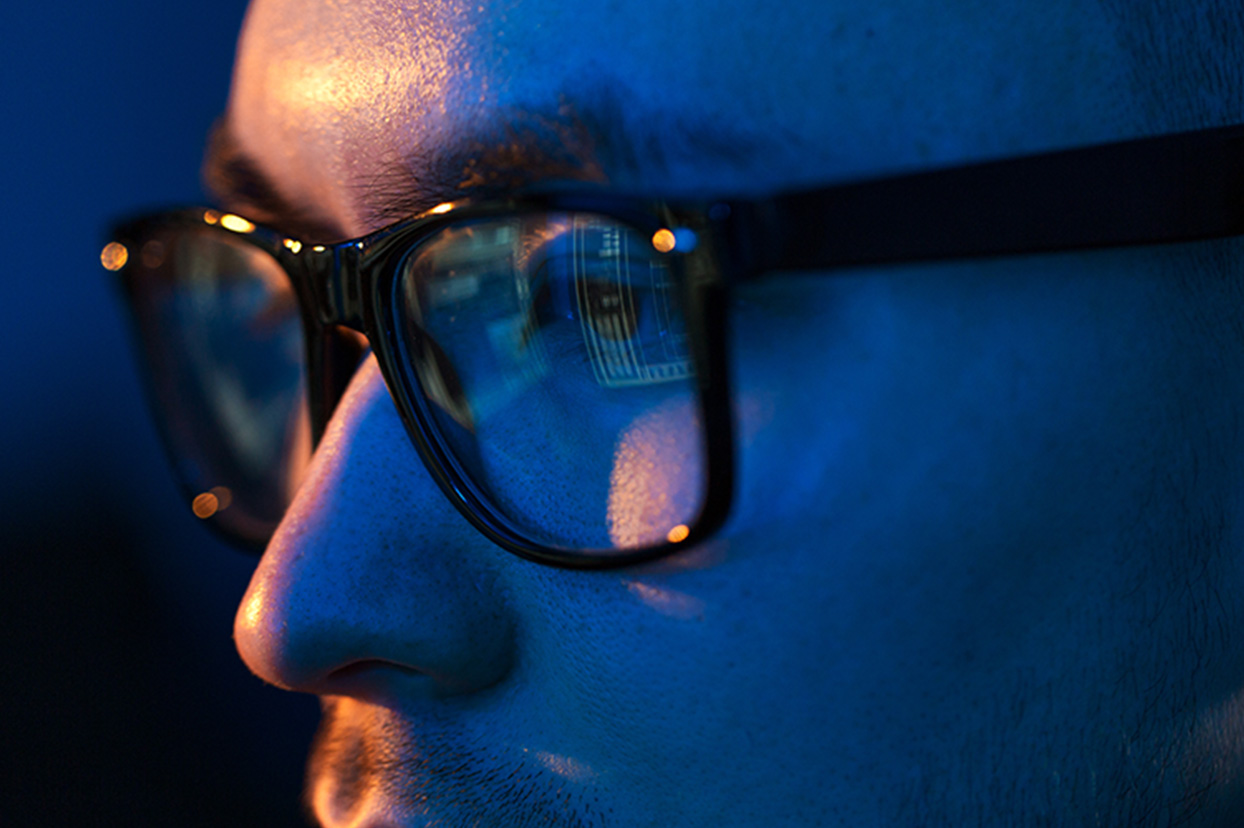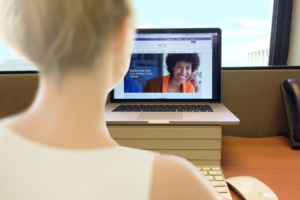April 29, 2021
Increasing blue light exposure has a dark side
The use of electronic devices has become almost inevitable in our daily lives. For the majority of employees working in corporate settings, nearly the entire workday is spent looking at computer screens. Could this amount of screen time be detrimental to our health? Researchers say it’s possible.
What are the effects of blue light exposure?
Back-lit digital devices like computers, tablets and smart phones all emit blue light, a high-energy, short wavelength visible to the human eye. Emerging research shows that blue light does have physical effects on the body, though few of them are positive.
Relatively short exposure to blue light can temporarily stimulate the brain and improve mood. Prolonged exposure, however, is likely to damage retinal cells over time and may contribute to the development of:
- Eye strain
- Age-related macular degeneration (AMD)
- Cataracts
- Nearsightedness
- Sleep disruption
- Mood disorders
Findings from a recent Harvard University study name High Energy Visible blue light, the type of light emitted by most digital devices, as the most dangerous light to the human eye. As the world becomes increasingly digitized, blue light exposure will likely remain an ongoing threat.
How can employees protect themselves from blue light exposure?
Fortunately, there are several ways to reduce digital eye strain and ultimately protect against long-term damage.
Research shows that staring at a screen for an extended period of time reduces blink rate, which often leads to dry, tired eyes. According to The Vision Council, employees in office settings can prevent this by using a strategy they call, “the 20-20-20 rule.” Every 20 minutes, take a 20 second break and look at something 20 feet away.
It’s a natural tendency to lean forward when looking at computer screens. Try to be mindful of the habit and do your best to straighten your posture. The ideal sitting position keeps eyes a full arm’s length from the screen.
Some have also found relief by using blue light glasses. With lenses designed to shield your eyes from harmful rays, these glasses may reduce eyestrain and brain stimulation, ultimately leading to improved sleep quality.
Experts also suggest reducing screen brightness as much as possible. Darkening the screen lowers the intensity of light taken in by your eyes. If the brightness can’t be adjusted, consider purchasing a tinted film to apply to the screen itself. Additionally, if you’re working with a device that features multiple light modes, the preset “night mode” produces significantly less blue light than others, making it the safest option for your eyes.





